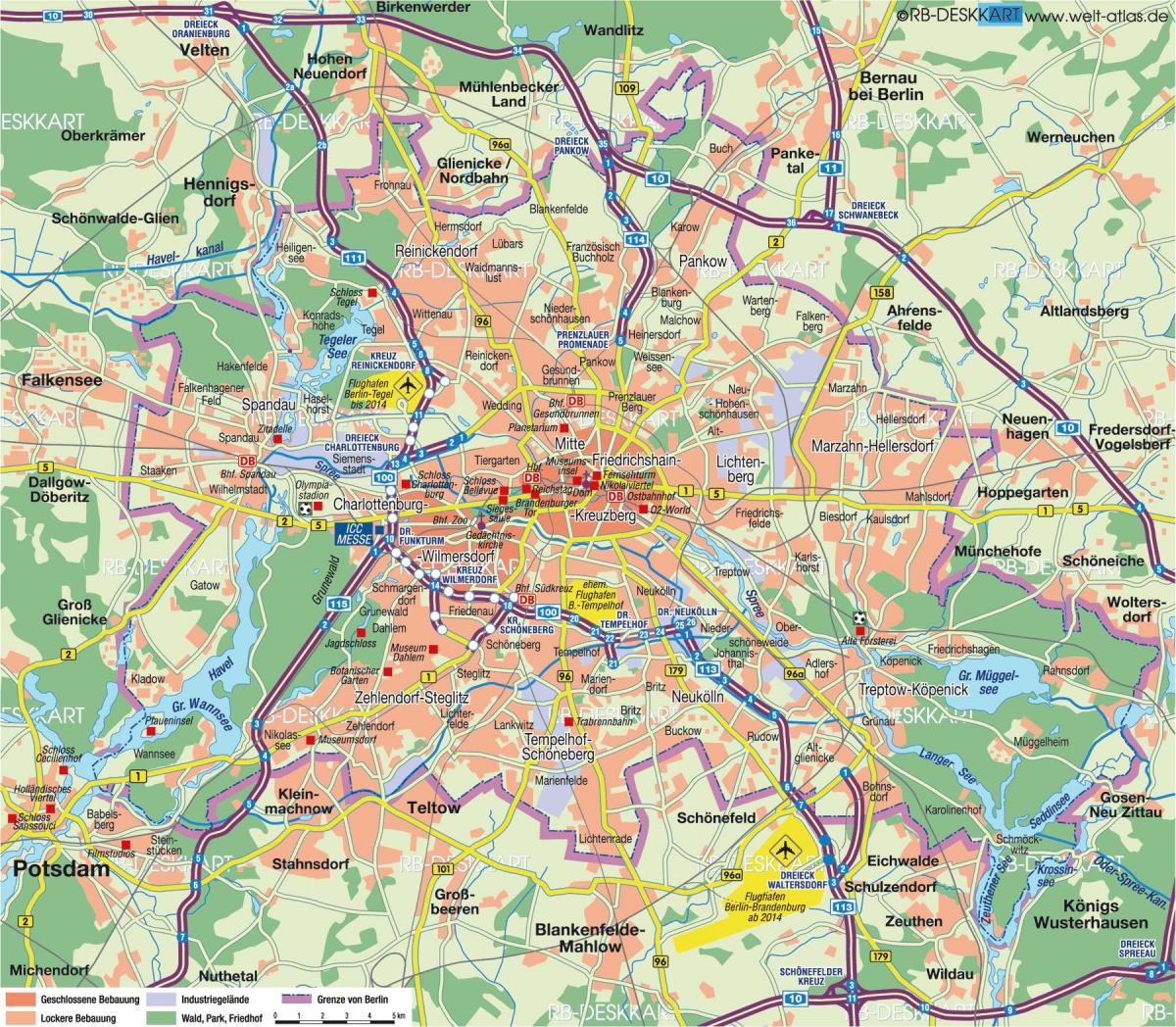search
Berlin map
Berlin city map. Berlin map (Germany) to print. Berlin map (Germany) to download. The political and physical division of Berlin had a profound and pervasive influence on urban planning (see berlin map). Because the walled boundary created, in effect, an urban frontier immediately west of what had been berlin central administrative, commercial, and cultural quarter—Berlin Mitte—which became part of East Berlin, West Berlin was forced to develop a new central area of its own, around the Kurfürstendamm and the nearby Zoo railway station in the former suburb of Charlottenburg.
The name Berlin may derive from the old (West Slavic) Polabian stem berl- or birl- meaning "swamp." Berlin is located in eastern Germany (berlin map), about 44 miles (70km) west of the border with Poland in an area with marshy terrain. Berlin landscape was shaped by ice sheets during the last Ice Age. The city center of berlin lies along the river Spree in the Berlin-Warsaw Urstromtal (ancient river valley), formed by water flowing from melting ice sheets.
Berlin is the capital city of Germany and one of the country 16 states. Berlin has an area of 891.85 km2 (344.35 sq mi). Berlin is situated on the River Spree in the northeastern part of Germany (see berlin map). Berlin is one of the most populous cities in the European Union with more than 3.4 million inhabitants. The city became the capital of the Kingdom of Prussia in 1701-1981, the German Empire in 1871-1918, the Weimar Republic in 1919-1933 and the Third Reich in 1933-1945. The city was divided into East Berlin, a German Democratic Republic capital, and West Berlin, a de facto state of the Federal Republic of Germany after World War II.
Berlin has a central government and 12 district governments (its shown in berlin map), with a chief burgomaster, or mayor, a 16-member government, and a city assembly, or parliament, on the central, or Land (state), level, and district mayors, district councils (governments), and district assemblies on the local level. Berlin has various local and state courts, including a constitutional court.
As its shown in berlin map, berlin is divided into 12 different neighbourhoods (Bezirke in German), with each of it having its own vibe and feel. Each of these neighbourhoods consists of several districts (Ortsteile oder Kieze in German). Although many people would refer to Alexanderplatz being the city centre of berlin, there is no real city centre in Berlin. Rather Berlin has a lot of “Kieze” which are little communities of their own within Berlin.


